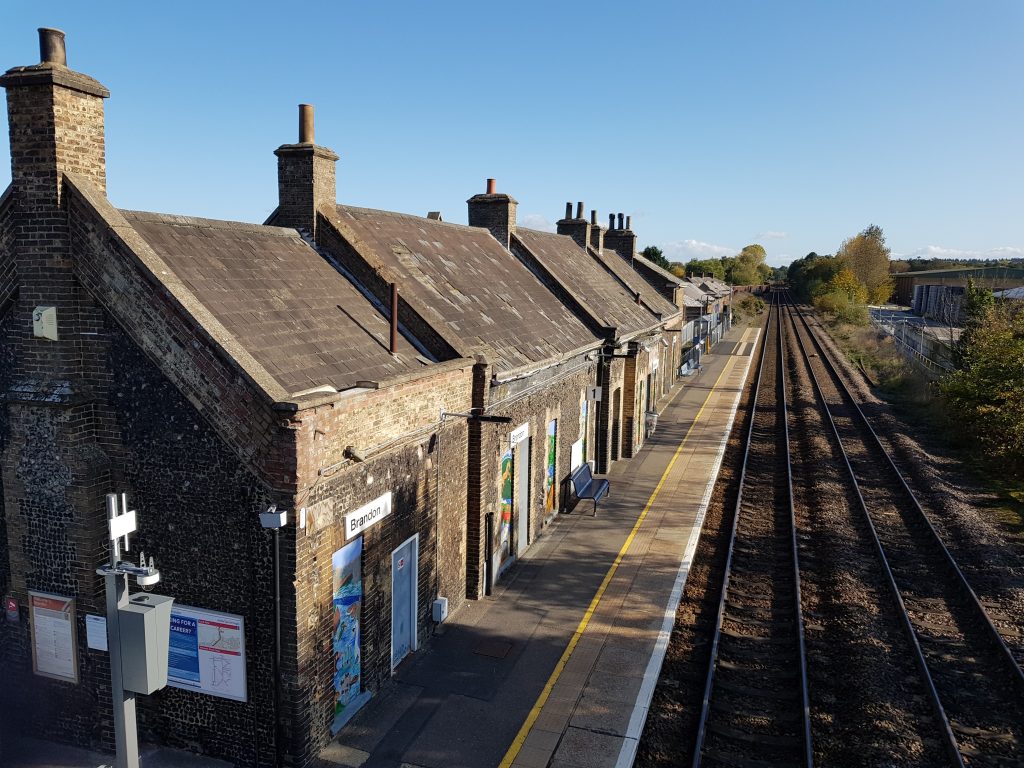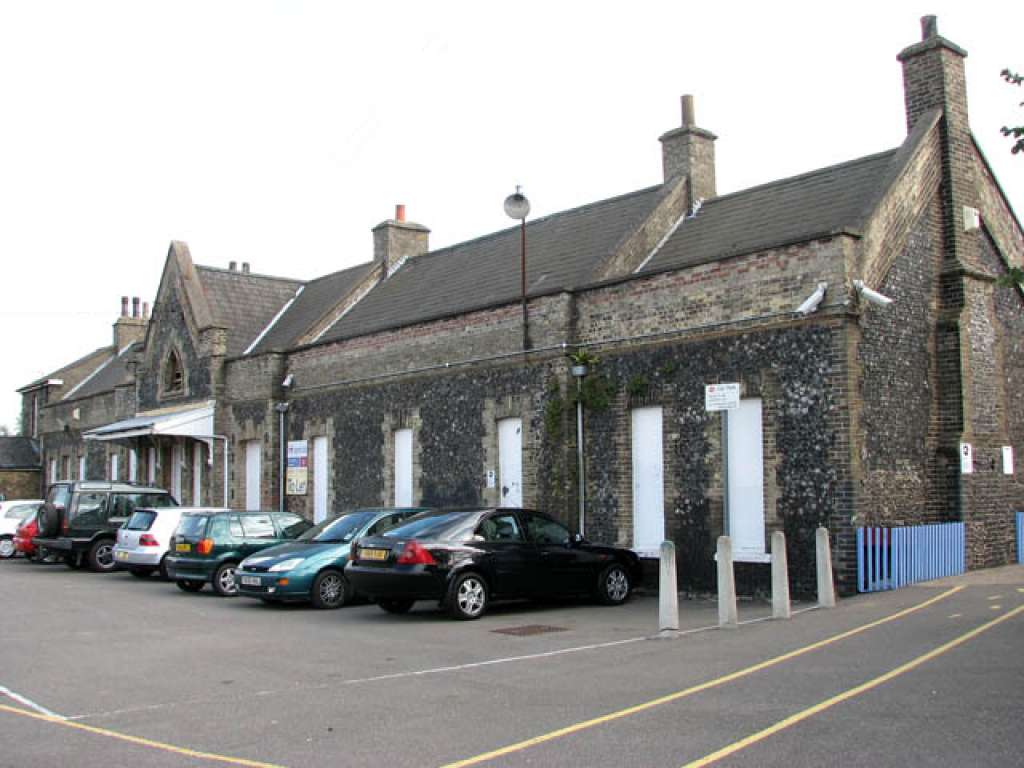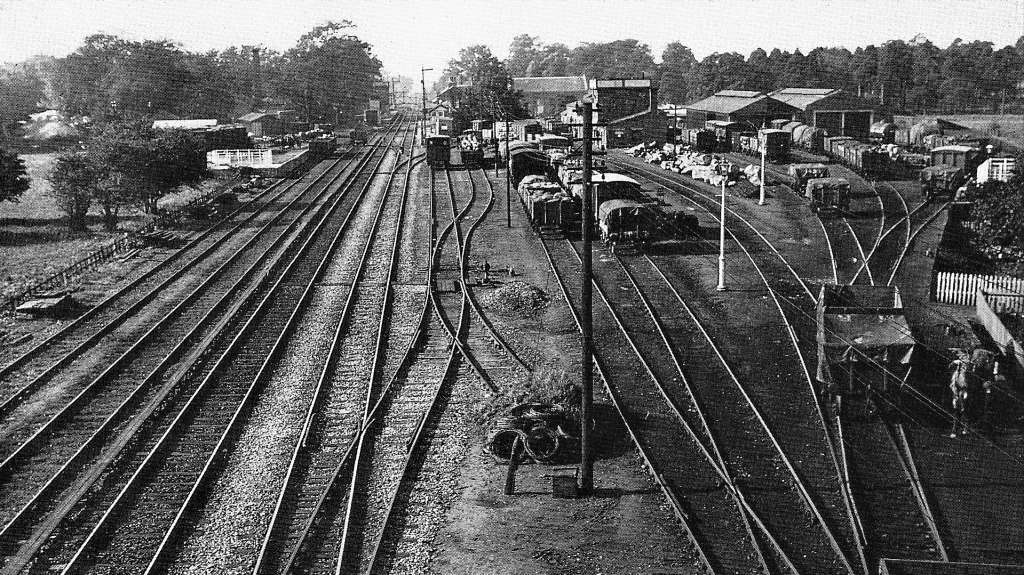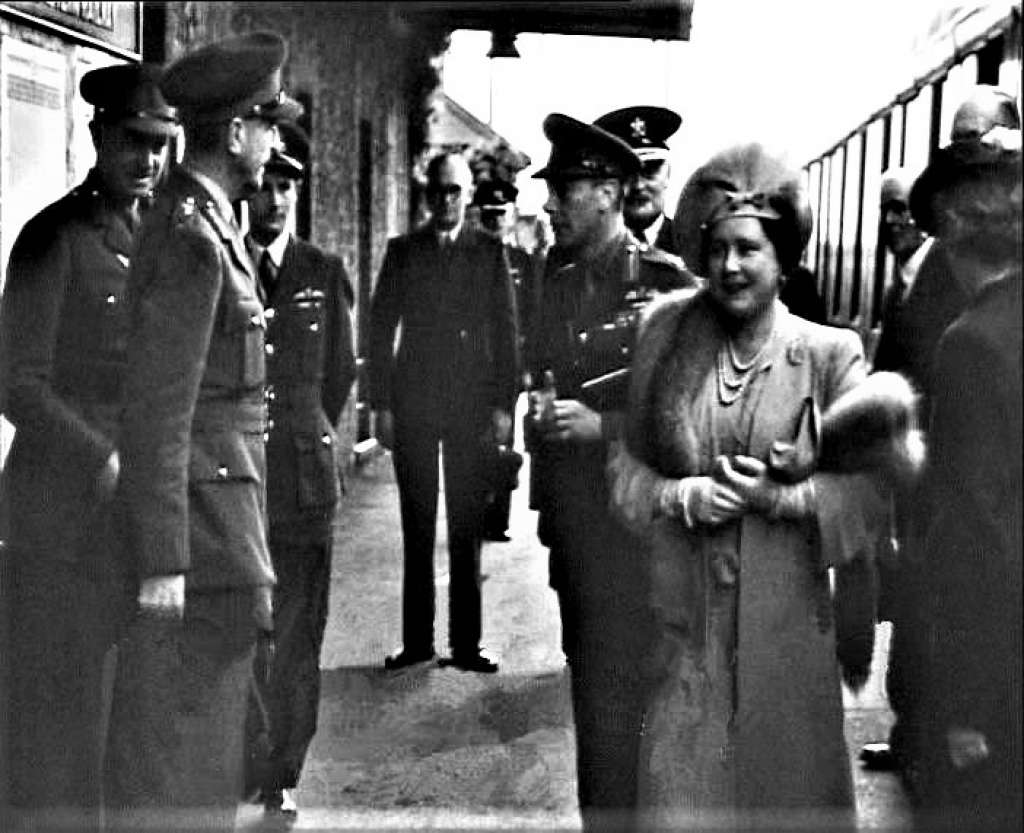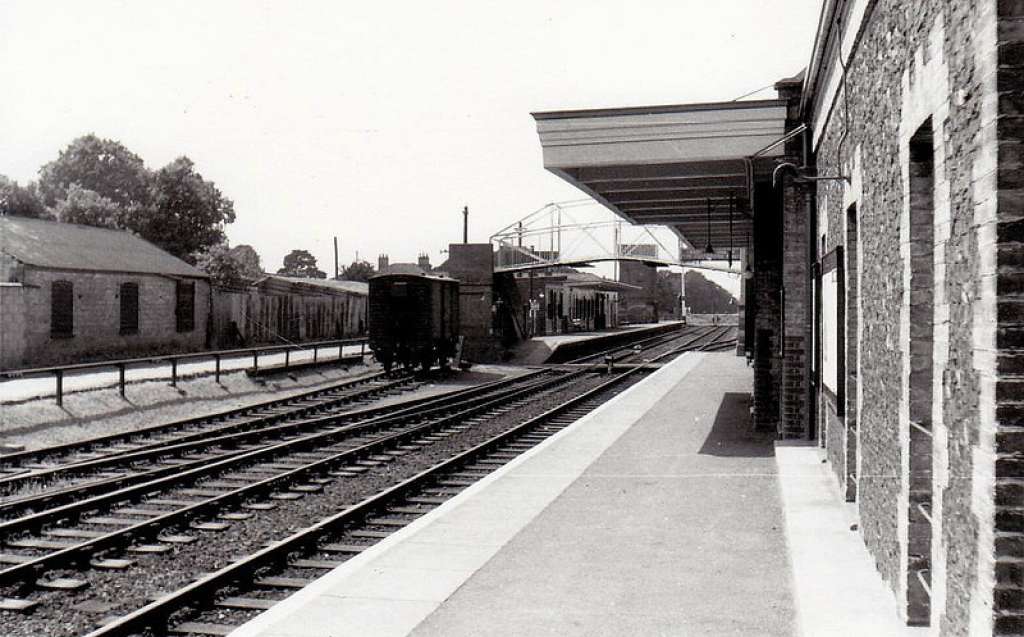PRESS RELEASE: SAVE backs rescue bid to revive 1845 Brandon Station
10th June 2020
As bulldozers loom over Brandon’s flint station building, SAVE Britain's Heritage and the Suffolk Building Preservation Trust appeal for the immediate listing of the 1845 station building.
SAVE has joined forces with the Suffolk Building Preservation Trust (SBPT) to apply for the listing of Brandon Station on the Suffolk Norfolk border, which has stood since 1845 and served both the RAF and the US Air Force during the second world war, even hosting a royal visit by the then King George VI and Queen Mother. The appeal comes in response to the station’s leaseholder Abellio Greater Anglia’s bid to demolish the station in order to expand the car park under permitted development rights. Currently, the station remains unlisted with demolition proposed by the end of 2020.
SAVE has campaigned since late 2019 to seek a reprieve for this historic station and propose a practical way of reusing it. However, the future of the historic station building looked set to be sealed following the decision by Breckland Council in May 2020 to approve Greater Anglia’s demolition plans.
The listing application now submitted to Historic England to assess Brandon includes new evidence unearthed by the SBPT and SAVE, with help from Railway Historian Michael Fell OBE, which sheds new light on Brandon’s unusual and significant historic and architectural associations.
Marcus Binney, executive president of SAVE Britain’s Heritage says: “the proposal to demolish historic Brandon Station has attracted dozens of impassioned objections from local people who believed it was part of their heritage. New evidence has now appeared suggesting that the architect of this charming country station was a leading artist of the early Victorian age, John Thomas, whose patrons included Prince Albert, Sir Charles Barry architect of the Houses of Parliament and the great railway builder Sir Morton Peto, whose imposing Suffolk mansion at Somerleyton was designed by Thomas
Barry described Thomas as "an unassuming self-taught genius” rising from modest beginnings to shining success. We now call on Network Rail, Greater Anglia and Historic England to join us in supporting the rescue and revival of this survivor of the heroic age of railway building.”
Ben Oakley, conservation officer at SAVE Britain’s Heritage says: “In an age of rising awareness regarding climate change and the important positive role retaining historic buildings has in climate and cultural heritage terms, Greater Anglia’s determination to replace a historic 175 year old building with car park spaces would appear short-sighted and anachronistic.”
Piers Hart, chair of the Suffolk Buildings Preservation Trust says: “The Trust is dismayed at the imminent demolition of the platform buildings at Brandon station. Greater Anglia’s decision to use permitted planning rights to destroy this historic landmark, on the spurious grounds of improving their service, demonstrates a cavalier disregard for the region’s heritage.
These early 19th century buildings are not only of architectural merit in themselves, forming as they do part of a chain of stations on the Norwich line, but they have historic significance, particularly with the second world war, when the station was the gateway for American troops and airmen coming to the region. In spite of strong opposition from local residents and businesses, Breckland Council appears to have been asleep on the job by rubber stamping approval for demolition. Historic England now have the chance to make amends for their failure to spot list the station in 2006.”
Opened in 1845, Brandon served as the terminus station connecting two of Norfolk’s most historic railway lines: the Norfolk Railway (formerly the Norwich & Brandon) and the Eastern Counties Railway. The Norfolk Railway line was built by the early railway pioneers Robert Stephenson and Sir Samuel Morton Peto.
The station building, now celebrating its 175th anniversary, was designed by a significant architect of the Victorian era John Thomas (1813–1862) and constructed by Thomas and William Piper, builders, of Bishopsgate, London. It was the first of five stations designed by Thomas on the Norfolk Railway, including the stations at Thetford, Wymondham and Attleborough, all of which are now listed grade II.
Thomas had worked under Edward Middleton Barry on designs for the grade I listed Palaces of Westminster, and had major roles in designing numerous railway structures, including the statues at the 1847 Euston railway station and the giant lion sculptures guarding Robert Stephenson's 1850 Britannia Tubular Bridge across the Menai Straight between the island Anglesey and north Wales.
Brandon’s claim to fame also lies in its role as the country’s centre for flint knapping. Whilst Brandon flint was used both for the station and much of the town itself, during the Second World War, and the town become the leading supplier of military gunflint for the British Army. The station also served as the main station for the American Airforce at nearby RAF Lakenheath AAF Mildenhall, with large sidings put in known as the American Sidings.
The listing application also sets out Brandon’s Royal connections. In September 1945 King George VI and Queen Elizabeth accompanied by the Duke of Gloucester and the Commander-in-Chief of the Home Forces, General Alan Brooke, alighted at Brandon platform as part of a visit to East Anglia to inspect military installations, a moment captured in previously unseen newsreel images unearthed by local historian Darren Norton of www.brandonatwar.co.uk.
Although the station is still a stop on the main line from Cambridge and Norwich, the station offices were closed in 1978 and up until September 2004 were leased to a building company. They are now empty and boarded up.
The station was rejected for listing following a previous Historic England listing assessment in 2006, which concluded that the station had been too altered over time, but noted they were unable to gain access to assess the building’s interiors.
Despite numerous objections to the station’s demolition by local residents of Brandon, its fate now rests with Historic England, with a decision on the listing expected urgently. SAVE has commissioned plans for repairing and reusing Brandon Station as small office suites aimed at people working or living in Cambridge, which is just 30 minutes from Brandon.
ENDS
Note to editors
1. For more information and images contact Ben Oakley, Conservation Officer at SAVE Britain's Heritage: ben.oakley@savebritainsheritage.org/ 07388 181 181.
2. See here for further details on our campaign to save Brandon Station.
3. SAVE Britain’s Heritage has been campaigning for historic buildings since its formation in 1975 by a group of architectural historians, writers, journalists and planners. It is a strong, independent voice in conservation, free to respond rapidly to emergencies and to speak out loud for the historic built environment.

